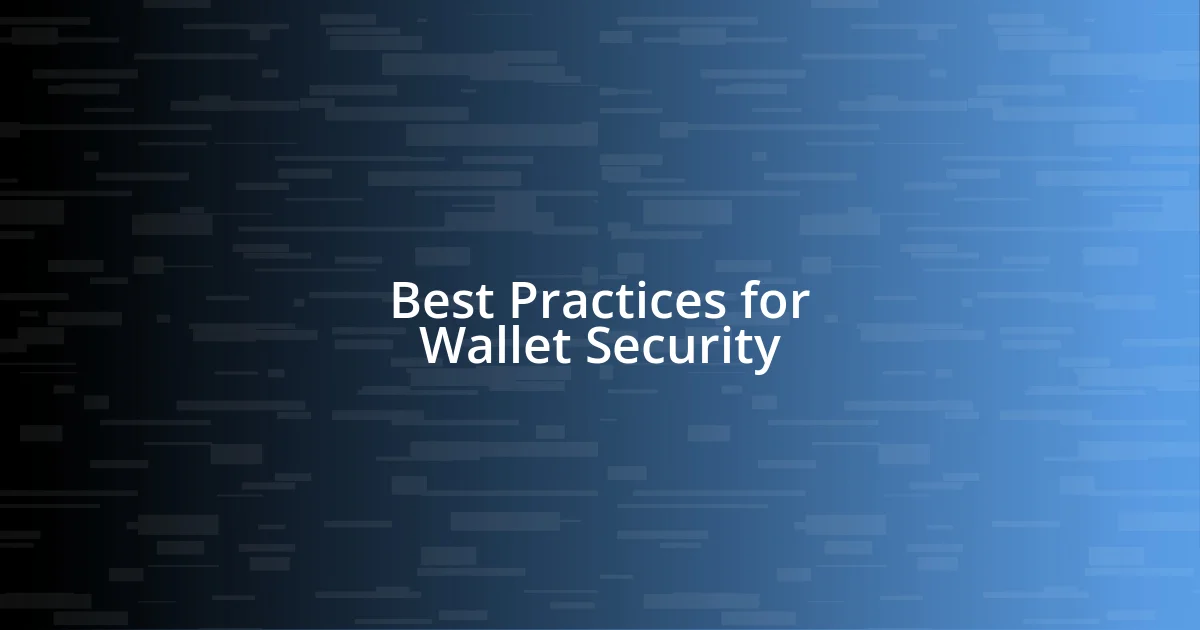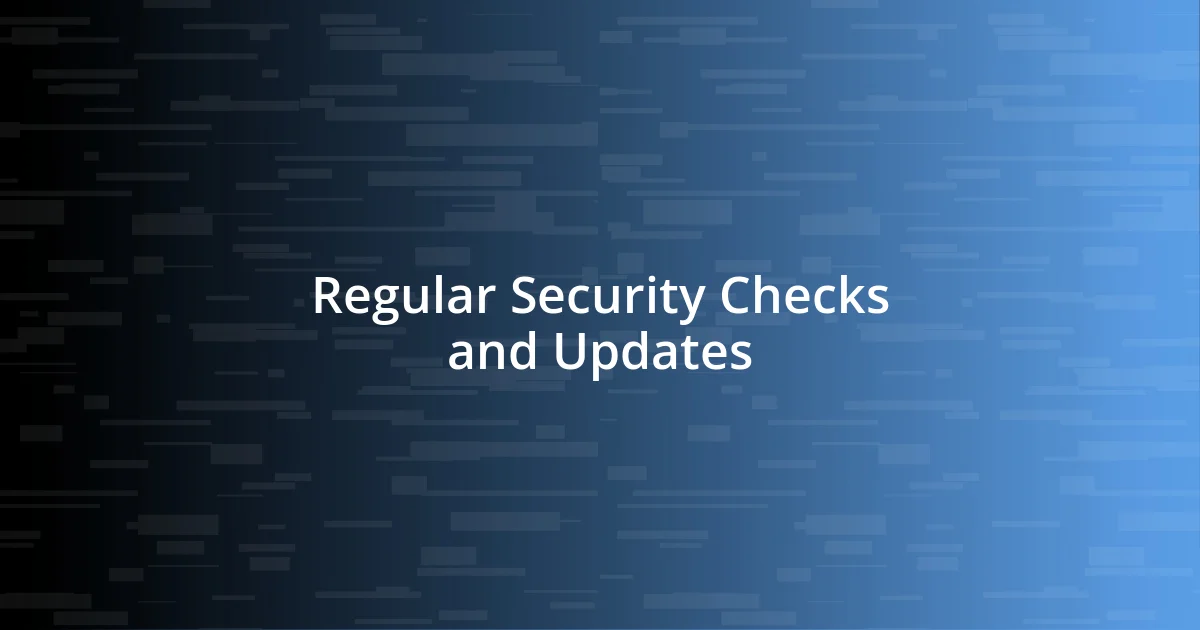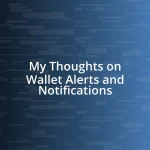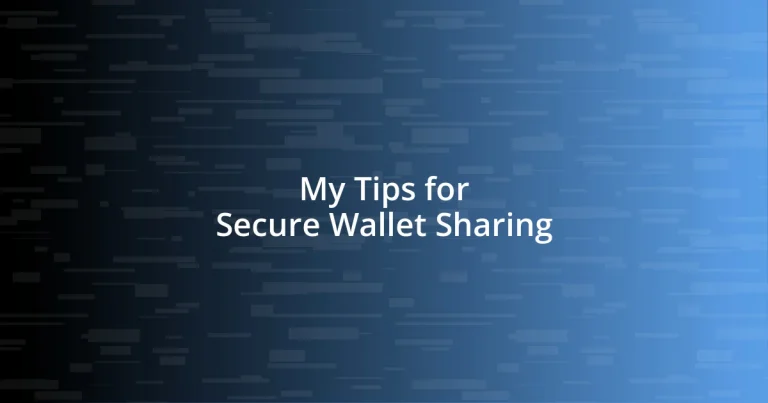Key takeaways:
- Choose secure wallet platforms that offer multi-signature authorization and establish clear communication around spending limits to enhance trust and collaboration.
- Implement strong security practices, such as complex passwords, two-factor authentication, and regular software updates to protect your wallet from potential threats.
- Manage access permissions thoughtfully by starting with limited access and regularly reviewing these permissions to foster accountability and maintain a sense of security among wallet users.

Understanding Secure Wallet Sharing
Sharing a wallet can be a tricky endeavor, especially in our increasingly digital world. I remember the first time I had to share my wallet with a friend during a trip. The thought of losing access or, even worse, sharing sensitive information was almost paralyzing. Have you ever felt that sense of vulnerability when entrusting someone else with your financial details? It’s important to prioritize both security and trust in these situations.
Understanding secure wallet sharing goes beyond just knowing the technical details; it’s about feeling safe with your choices. I’ve learned that choosing the right platform is key. Opt for wallets that offer features like multi-signature authorization, where both users need to approve a transaction. It cushions the process and builds a layer of trust. Wouldn’t you feel more at ease knowing that every transaction requires a consensus?
Moreover, communication plays a pivotal role in secure wallet sharing. When I shared my wallet, we set clear boundaries on spending limits and expectations. It made the experience feel collaborative rather than one-sided. Have you set those limits before? Having those discussions might just save you from misunderstandings later on, fostering a relationship built on transparency and mutual respect.

Best Practices for Wallet Security
When it comes to wallet security, it’s essential to stay proactive rather than reactive. I recall a time when my friend nearly lost access to their funds due to a weak password. It was a sobering reminder of how easily things can go awry. In my experience, using a strong, unique password is the first line of defense. Pair that with two-factor authentication (2FA) – it may seem like an extra step, but it’s worth it for the peace of mind it offers.
Here are some best practices to enhance your wallet security:
- Use complex passwords with a mix of letters, numbers, and symbols.
- Enable two-factor authentication (2FA) on your wallet account.
- Regularly update your wallet software to patch any vulnerabilities.
- Be cautious about sharing sensitive information, even with trusted individuals.
- Backup your wallet’s private keys in a secure location, separate from your device.
Embracing these practices can be a game-changer. I remember feeling a significant weight lift off my shoulders once I implemented these measures. It’s about taking control and ensuring your financial assets are well-protected from potential threats.

Setting Up Wallet Access
Setting up wallet access is a pivotal step in ensuring that both parties feel secure in their financial interactions. When I first enabled access for my partner, I couldn’t shake the butterflies in my stomach. I vividly remember sitting down with them, both of us exchanging worried glances, but it eventually turned into a reassuring experience. We navigated the process together, confirming every step with each other to reinforce our trust and understanding.
It’s crucial to choose the right permissions when sharing access. Have you ever thought about how granting full access might feel overwhelming for both parties? In my case, I chose to provide limited access at first. This meant they could view transactions without altering them. It felt like a safety net, allowing us to adjust as necessary without diving headfirst into a full commitment. It’s all about creating comfort through gradual trust-building.
Finally, regular check-ins are essential. After we set things up, I made it a point to review our shared wallet monthly. This practice allowed us to stay aligned on our spending habits and goals, fostering open communication. One evening, as we reviewed transactions over coffee, I felt a sense of camaraderie that deepened our partnership. These moments transform technical processes into shared experiences, which I believe is vital for effective wallet sharing.
| Access Type | Description |
|---|---|
| View Only | Allows the user to see transactions but not make changes. |
| Limited Access | Enables viewing and executing transactions, with some restrictions. |
| Full Access | Grants complete control of the wallet, including changing settings and withdrawing funds. |

Managing Permissions Effectively
Managing permissions effectively is crucial for safe wallet sharing. When I first shared my wallet with a close friend, I made the mistake of giving unrestricted access. The look on their face when they realized they could modify everything was a mix of excitement and fear. It hit me then—sometimes, less is more. Today, I always advocate for tailor-made permissions depending on the person and the situation.
I’ve found that using tiered access levels makes a significant difference. For instance, I once split a wallet with my sibling, and starting with view-only access allowed us to build trust gradually. We discussed each transaction before moving on to broader permissions. That initial dialog meant our relationship didn’t come under strain due to misunderstandings. Have you ever felt unsure about someone’s intentions? Keeping access limited helped ease my mind during those early stages.
Regularly reviewing permissions is another best practice I cannot emphasize enough. I grew accustomed to checking our access settings after every major expenditure. It sparked meaningful conversations, allowing us to re-evaluate roles and responsibilities. Once, during one of these reviews, we identified an unnecessary access level that was no longer relevant—it saved us from potential future disputes. Engaging in this practice fosters accountability and strengthens the bond between shared wallet users.

Regular Security Checks and Updates
Routine security checks are vital to maintaining a safe wallet-sharing experience. I remember a time when I overlooked this step, and it led to a few surprises in our transaction history. We noticed an unfamiliar charge, which instantly made my heart race. Conducting regular reviews isn’t just about catching mistakes; it’s about fortifying trust. How comforting would it feel to know you’re both on the same page, checking in on each other’s spending patterns?
Updating security measures should also be a priority. After an incident where my account was almost compromised, I learned the hard way that using outdated passwords is risky. I began changing passwords every couple of months and enabling two-factor authentication (2FA). Have you ever implemented such changes? The peace of mind that comes with knowing my wallet is shielded makes all the effort worthwhile. Each small adjustment reinforces my security, making me feel in control of my finances.
Lastly, I encourage sharing an update schedule with your wallet partner. Establishing a routine can turn these security checks into anticipated moments rather than dreaded tasks. It’s similar to a ritual—perhaps you both can grab a coffee and revisit those updates together. I’ve found that turning these discussions into positive interactions strengthens our relationship, turning something that could feel daunting into a collaborative effort. Wouldn’t it be wonderful to not only safeguard your funds but also deepen your connection through these shared experiences?












